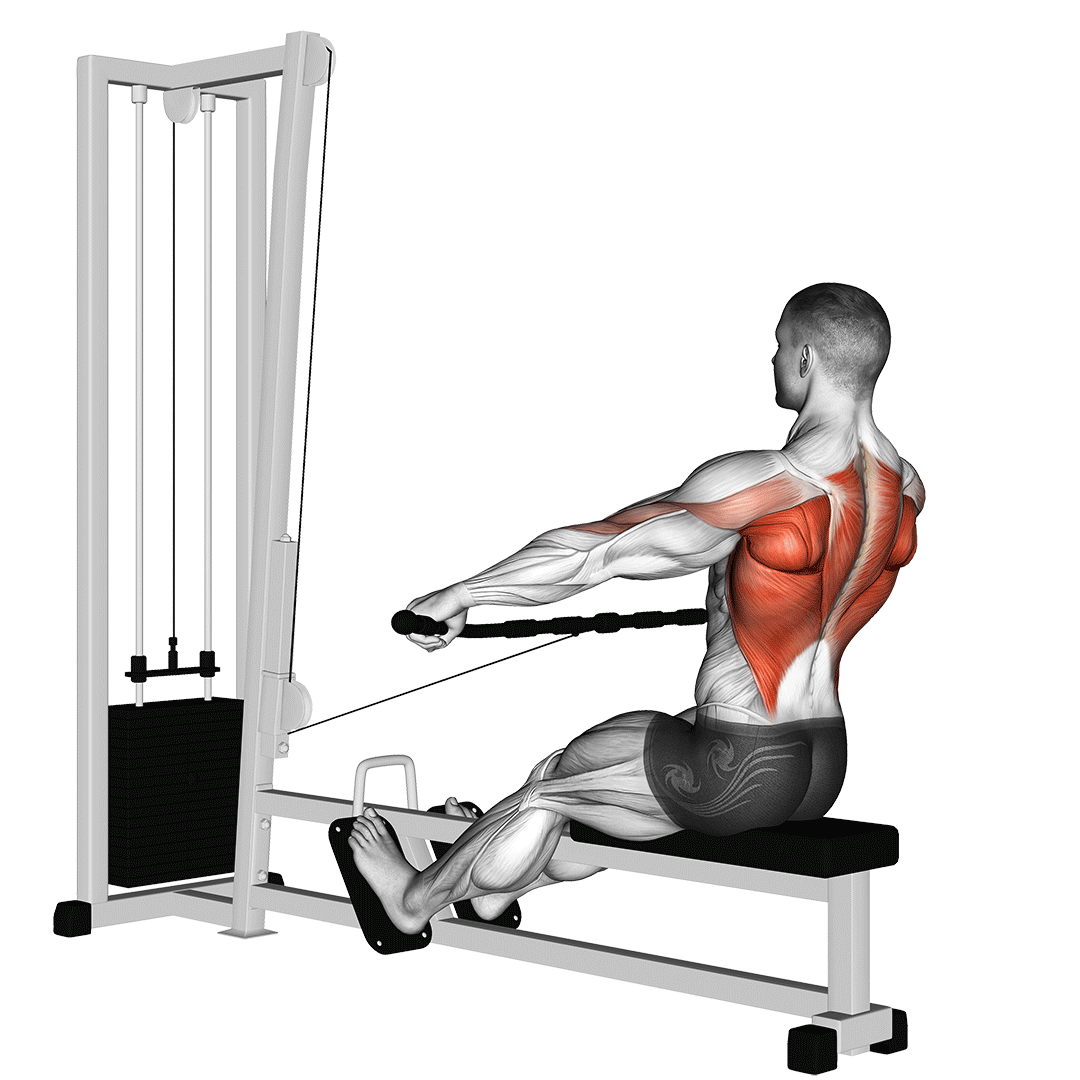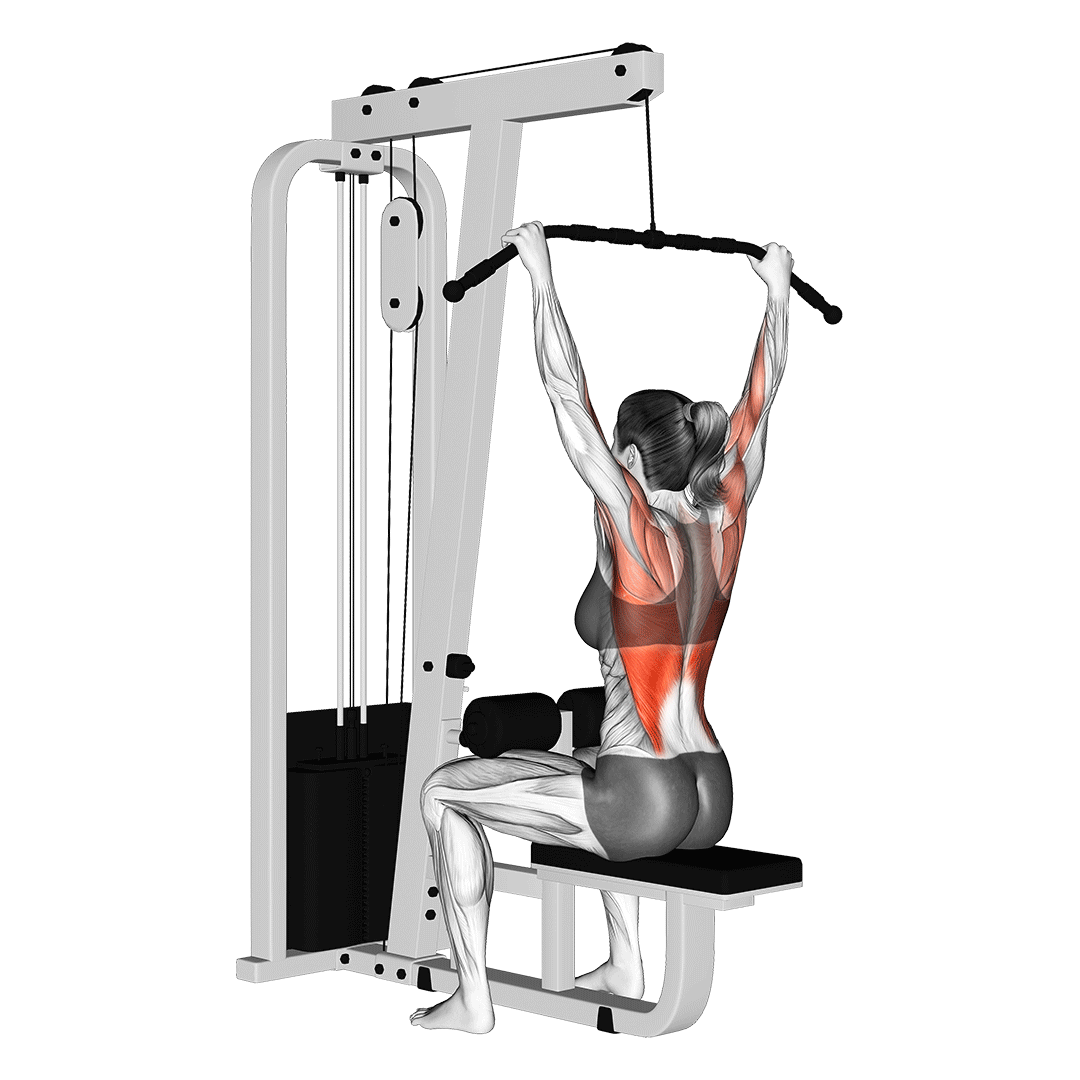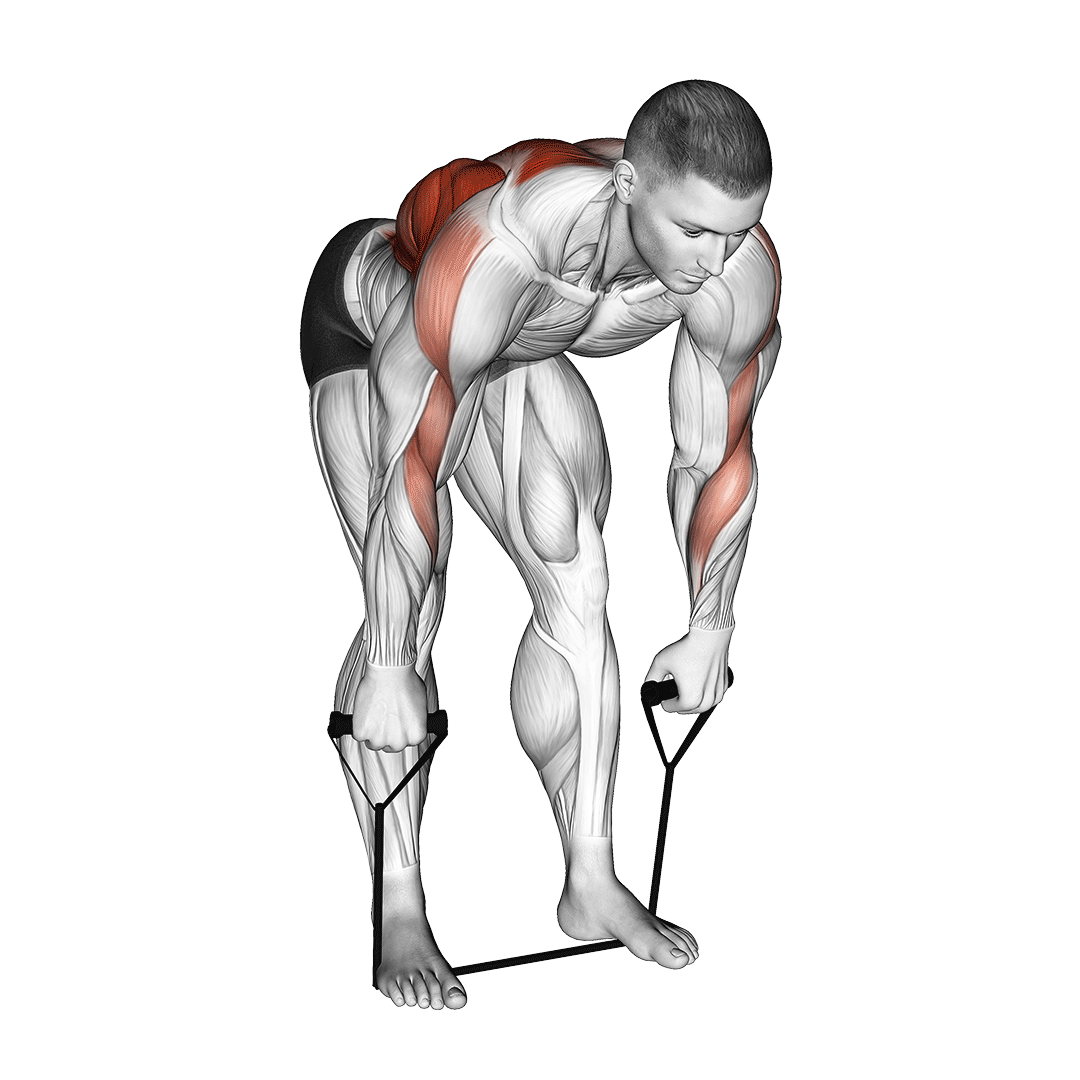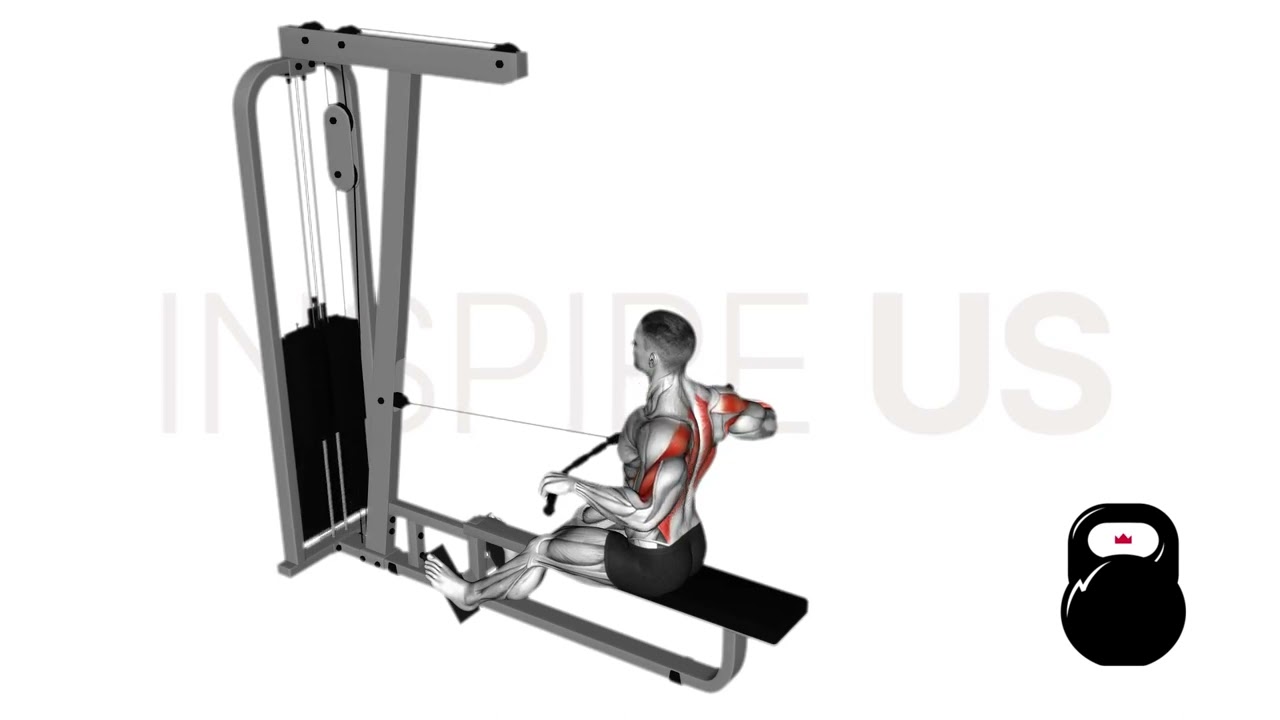Wide Grip Cable Rows: Benefits, Muscles Worked, and More
The standard cable row is well-established as an effective back exercise - but things can be boosted even further by altering the width of the lifter’s grip. This creates a separate variation of the exercise known as the wide grip cable row.
Follow along as we discuss the wide grip cable row, its benefits as a compound back exercise, and why it’s situationally superior to the regular cable row.
What are Wide Grip Cable Rows?
Like other forms of row, the wide grip cable row is a compound horizontal pulling exercise performed with marked use of elbow flexion and scapular adduction.

Unlike the conventional cable rows stance, the wide grip is adopted so as to reduce the involvement of the arm’s musculature - instead shifting the emphasis towards the latissimus dorsi and other muscles found in the back.
Because of its utilization of a cable machine, cable wide grip rows are often performed for moderate-to-high volume and only a moderate amount of resistance. This is in contrast to exercises like the Pendlay or bent-over row, where volume is often kept to a lower extent due to the sheer intensity of each repetition.
Best Attachment to Use for Wide Grip Cable Rows
The standard attachment for regular cable rows is usually a close-grip handle or an EZ bar.
However, for wide grip cable rows, it may be more appropriate to use a wide straight bar attachment, such as what one would use for lat pulldowns.
This will help reduce the risk of injury and allow for a pronated grip while also maximizing contraction of the back muscles.
How to do the Cable Wide Grip Row
To prepare for a repetition of wide grip cable rows, the lifter will need to seat themselves before the cable pulley, placing both hands wider than shoulder-width apart along the bar using an overhand grip.
Pressing the feet against the footrests if available, the lifter will then draw themselves far enough away from the pulley to create tension in the cable, the bar still in hand.
Pushing the chest upwards, leaning back slightly and keeping the elbows angled behind the torso, the lifter will then contract their back muscles and pull the bar towards their sternum. As the elbows pass the torso, the lifter will also retract their shoulder blades, pulling with the entirety of their back muscles.
Once the bar touches the torso, the lifter will allow the tension of the cable to slowly pull straighten their arms back out - thereby completing the repetition.
Throughout the exercise, the torso itself should remain stationary, with the only moving parts being the scapula and the arms. The “burn” should be felt along the upper and middle sections of the back.
What Muscles do Seated Wide Grip Cable Rows Work?
The wide grip cable row is a compound movement, meaning that more than one muscle is worked throughout its movement pattern. These muscles are divided according to the type of work they do, with dynamic contraction making a mover muscle, and static contraction making a stabilizer muscle.

Primary and Secondary Mover Muscles
The main muscles targeted by wide grip cable rows are the latissimus dorsi (particularly the outer section), the trapezius and the posterior section of the deltoid muscles.
Apart from these three muscle groups, the rhomboids, teres muscles and infraspinatus are also used to a secondary extent.
Stabilizer Muscles
In terms of the muscles responsible for stabilizing the movement, the biceps brachii, brachioradialis and erector spinae are all utilized - as well as the aforementioned rotator cuff muscles.
When Should You Pick Wide Grip Cable Rows Over Normal Cable Rows?
Though the difference may seem negligible, picking between the wide grip or conventional cable row can make a substantial difference in terms of training results. This is also the case when comparing wide and narrow grip cable rows as well.
The wide grip variation should be used for eliciting greater contraction of the latissimus dorsi and other back muscles - or if a shorter range of motion is needed, for whatever reason.
With the hands set in an overhand and wider position, the biceps and other elbow flexor muscles are put in a disadvantageous position, making them less able to contribute to the exercise. This places more of the demand on the muscles of the back.
In addition, the arms need to pull for a lesser distance in comparison to other cable row variations, shortening the exercise’s range of motion. A shorter range of motion allows for greater weight to be moved for the same level of exertion, as well as a greater capacity for volume with each set.
In short - use the wider grip for more back emphasis or if you want to up training resistance and volume.
What are the Benefits of Doing Wide Grip Cable Rows?
More niche benefits notwithstanding, the following advantages are the most common reason why wide grip cable rows are performed by lifters.
Excellent for Building Back Mass and Horizontal Pulling Strength
Like other forms of row, the wide grip cable row is particularly effective at building strength and muscle mass in the back. Because of its ability to emphasize the muscles of the middle back, this contributes quite effectively to the appearance of width - especially in regards to the lats.
Furthermore, although it is not to the same extent as free weight row exercises, the wide grip cable row is nonetheless quite useful as a supplementary training tool for building horizontal pulling strength.
Of course, which particular benefit the exercise will develop will also depend on how it is programmed.
If you wish to maximize hypertrophy, increase volume and reduce resistance. Likewise, for building strength, pair the cable row with a heavy free weight back exercise.
Carryover to Other Horizontal Pulling Exercises
As mentioned in the previous entry, the wide grip cable row is quite useful for developing horizontal pulling strength. However, its capacity to improve performance in other horizontal pulls goes beyond pure strength.
Because the wide grip variation of the cable row largely eliminates dynamic contraction of the biceps, the lifter will be forced to learn how to properly recruit their back muscles - and how to utilize mechanics related to doing so.
This will indirectly also improve how the lifter performs other exercises, fine-tuning their execution of movements like the barbell row or close-grip pull-up.
Reinforces Scapular Adduction
One widely-applicable benefit of the cable row is its capacity to reinforce the biomechanic of scapular adduction - or what is otherwise known as retracting the shoulder blades.
This mechanic is used for a wide variety of different activities and exercises, and strengthening the body’s capacity to execute it is vital to having a healthy physique.
When the wide grip cable row is performed with a full range of motion, not only are the muscles responsible for scapular adduction strengthened, their mobility is also improved as they are worked through a full range.
Low-Impact and Adjustable
As is the advantage with most other machine-based exercises, the wide grip cable row is considerably less strenuous on the joints of the body in comparison to free weight exercises.
This benefit is taken a step further by the ease in which most cable machines can be adjusted, allowing for an easily interchangeable handle, angle of resistance or even how much resistance is actually being used.
Although the wide grip cable row is not quite novice-friendly so to speak, it is nonetheless safer and more accessible than exercises like the Pendlay row or landmine row.
Common Wide Grip Cable Row Mistakes to Avoid
Because of the slightly greater risk of shoulder joint injury that comes with all wide grip rowing movements, it is important to avoid the following commonly made mistakes.
Swinging the Torso
A mistake not solely constrained to the wide grip cable row - lifters should strive to keep their torso as stationary as possible throughout each repetition of the exercise.
This will not only ensure that the back muscles are being targeted intensely, but also that the lifter’s stance remains stable and uncompromised.
Swinging the torso during a cable row repetition could be a sign that the lifter is attempting to move too much weight, or that they are failing to properly seat themselves atop the bench. Try reducing the resistance or otherwise setting the feet against the footplates for greater stability.
Curving the Upper Back
A vitally important aspect of the cable row to secure is the position of the upper back during the exercise. Although the shoulder blades will not be retracted throughout the entire movement, curving forwards at the neck or upper back could place the upper section of the spine in jeopardy.
Throughout the entire set, it is important for the lifter to keep their chest pushed outwards, and to ensure that the shoulders are not internally rotating at any point. This will largely reduce the risk of the upper back rounding, although care should nonetheless still be taken to ensure it does not occur.
Flaring the Elbows to the Sides
Although this particular mistake can be confusing, one good way to think of it is the direction in which the elbows are pointing during the pull.
A properly performed wide grip cable row will keep the elbows relatively low and pointing behind the lifter, whereas an improperly performed one may have the elbow pointing diagonally or even laterally out to the sides.
Performing the wide grip cable row with the elbows in a poor position can compromise the shoulder joint, potentially leading to impingement or similar injuries.
Wide Grip Cable Row Alternatives
If you wish to target your lats from a different angle or just don’t have a cable machine, try the following wide grip cable row alternatives out.
1. Wide Grip Lat Pulldowns
Although the lat pulldown is already comparable to the wide grip cable row in terms of lats recruitment, performing it with a wide grip as well can improve things even further.

The wide grip lat pulldown is a vertical pulling exercise that also makes use of a cable machine - meaning that it shares many of the same benefits as the cable row. This makes it ideal for lifters that simply wish to change the angle of resistance, or shake up their workout plan.
2. T-Bar Rows
The T-bar row is a free weight horizontal pull that makes use of a landmine attachment and a T-bar to target the back. Unlike the wide grip cable row, it is performed in a standing position and is meant more to target the inner section of the back, rather than the outer part of the lats.

T-bar rows are considerably heavier and more intense than cable rows, and can serve as a viable substitute for more advanced weightlifters.
3. Banded Wide Rows
For lifters who wish to retain the same movements and benefits of wide grip cable rows at home, using a resistance band is perfectly suitable.

The resistance band wide grip row is otherwise identical to its cable row counterpart, only with the lifter standing upright.
To substitute the wide grip cable row with a resistance band, select one that is of moderate resistance and ensure it is tied to a suitably stable object. In all other aspects, the exercise remains the same.
Frequently Asked Questions (FAQ)
Is a Close Grip Row Better Than Wide Grip?
Both close and wide grip rows are perfectly suitable within their own respective contexts.
A close grip row is better for targeting the inner section of the back’s musculature, as well as the muscles of the arms; Likewise, a wide grip is better for targeting the latissimus dorsi.
What is the Best Type of Row?
There is no “best” type of row, as different row exercises excel at different purposes. For general back development, the bent-over row is excellent. For maximal range of motion, the Pendlay row is perfect.
For targeting the lats in a safe and low-impact way, try the wide grip cable row.
Does the Grip Matter for Cable Rows?
Yes.
Altering your grip during a cable row will change what specific muscles are emphasized by the movement. An underhand grip will target the biceps brachii to a greater degree, whereas an overhand grip shifts more resistance towards the muscles of the back.
Final Thoughts
The wide grip cable row is no doubt an effective inclusion into any back workout - but remember that it has its own set of disadvantages as well.
If you are an athlete or an individual who wishes to build functional strength, it is important to pair cable rows with a more functional exercise as well.
Finally, remember to keep the elbows pointed behind the torso, and the torso itself inclined slightly backwards.
References
1. Lehman GJ, Buchan DD, Lundy A, Myers N, Nalborczyk A. Variations in muscle activation levels during traditional latissimus dorsi weight training exercises: An experimental study. Dyn Med. 2004 Jun 30;3(1):4. doi: 10.1186/1476-5918-3-4. PMID: 15228624; PMCID: PMC449729.

